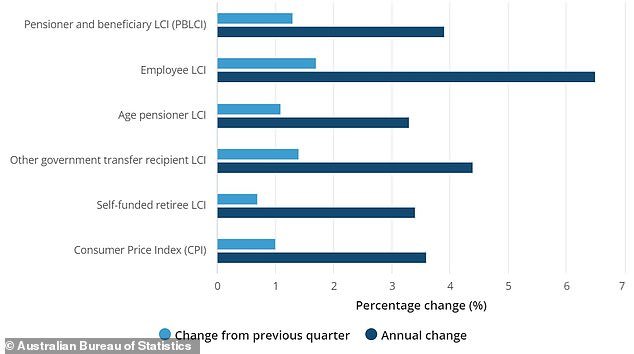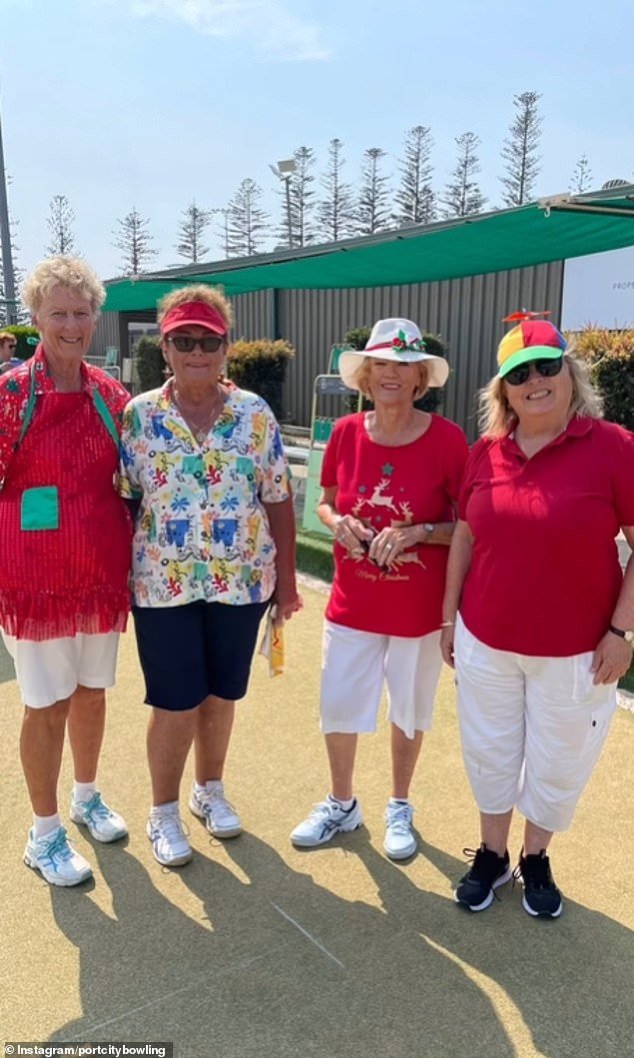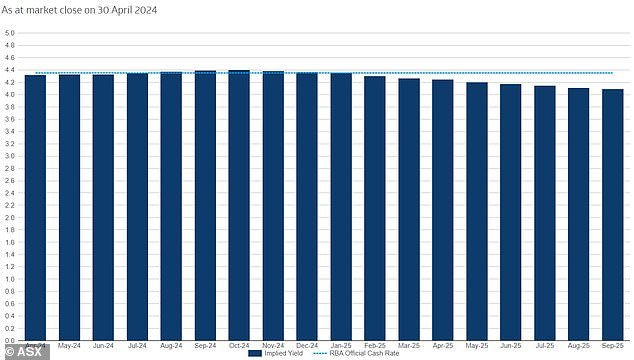The one group of Australians cruising through the cost of living crisis – and how they are driving up inflation for the rest of us
Baby boomers appear to be struggling through the cost of living crisis – and risk seeing interest rates rise if they keep spending.
The older generation, who experienced interest rates of 18 percent in 1989, are now suffering the least from the Reserve Bank’s thirteen interest rate increases in eighteen months.
The most aggressive rate hikes in a generation are disproportionately hitting the young and saving the elderly, with cash rates now at a 12-year high of 4.35 percent.
Economist Brendan Coates of the Grattan Institute said baby boomers, who are more likely to own their own homes, were the ones fueling inflation with their spending.
“The fact that we have so many wealthy, older Australians at the moment who are not really affected by higher interest rates means that bigger rate increases are needed to get inflation under control,” he told Daily Mail Australia. .
‘That’s true. They are not being pressured on either side.”
New data from the Australian Bureau of Statistics released on Wednesday shows workers’ living costs rose 6.5 per cent in the year to March as they battled rising mortgage costs.
Baby boomers appear to be struggling through the cost of living crisis – and risk rising interest rates as they continue to spend (pictured is a stock photo)

New data from the Australian Bureau of Statistics released on Wednesday shows workers’ living costs rose 6.5 per cent in the year to March as they battled rising mortgage costs. But those on an age pension saw their living costs rise by just 3.3 percent, compared to 3.4 percent of self-funded retirees
But those on an age pension saw their living costs rise by just 3.3 percent, compared to 3.4 percent of self-funded retirees.
Both measures for retirees, who are more likely to have already paid off their homes, were below the nominal inflation rate of 3.6 percent.
“Older Australians have typically paid off their homes and therefore the cost of living increase is much smaller as they are not hit by higher interest rates,” Coates said.
Baby Boomers made up 21.5 percent of Australia’s population at the last 2021 census, surpassing Generation X at 19.3 percent, Generation Z at 18.2 percent, but tied with Millennials at 21.5 percent.
After paying off their house, this group, born between 1946 and 1964, benefits when the RBA cash rate rises, especially if they have their savings in a term deposit.
“It’s fair to say that many older people win when interest rates rise, while younger people tend to lose,” Coates said.
“Those who are less affected by mortgage costs, such as baby boomers, continue to spend money in the economy.”
Richard Holden, professor of economics at the University of New South Wales, said that while baby boomer spending was a factor, inflation in the services sector (and not the goods sector) was the real cause of the cost of living crisis .
“They tend to have a higher labor component and that’s where wage increases are above target inflation levels,” he told Daily Mail Australia.
‘Spending on lawn boxes plays a role, but only a small role.
‘If you were to ask me, ‘What is the main cause of inflation?’ – it doesn’t seem to me that baby boomers are spending a lot of money.’

Richard Holden, professor of economics at the University of New South Wales, said that while baby boomer spending was a factor, “spending on lawn bowls plays a role, but only a small role” (pictured are bowlers in Port Macquarie on the north coast of NSW)

The 30-day interbank futures market has now ruled out rate cuts in 2024 and is now betting on just one rate cut in 2025
An analysis of official inflation data shows that prices for recreational sports and cultural services have risen by 9.2 percent, including activities such as bowling and hobbies that older people have more time for.
Prices of postal services rose by 12 percent, with older people increasingly posting letters rather than using email.
But young people are also affected by a 7.8 percent increase in rents and a 6.1 percent increase in secondary school costs.
The 30-day interbank futures market has now ruled out rate cuts in 2024, with underlying inflation rates of 4 percent or more, higher than the RBA’s target of 2 to 3 percent.
It is now betting on just one rate cut in 2025.
ANZ senior economist Catherine Birch said a rate hike in 2024 was possible but unlikely because spending on goods and services for every Australian had fallen since the end of 2022.
“We think the likelihood of another rate hike is quite low,” she told Daily Mail Australia. “You can’t rule it out.”
